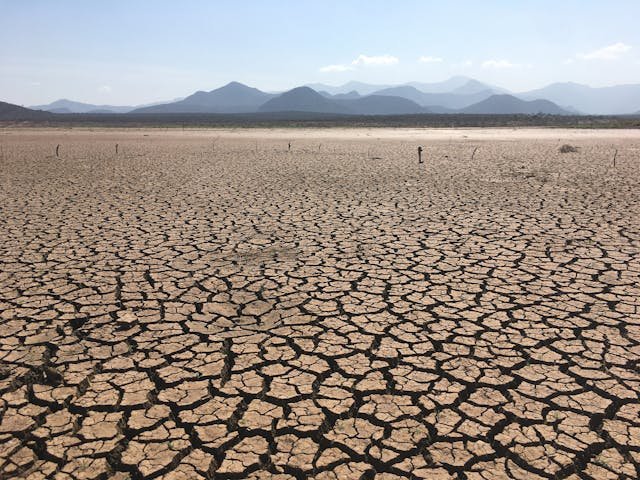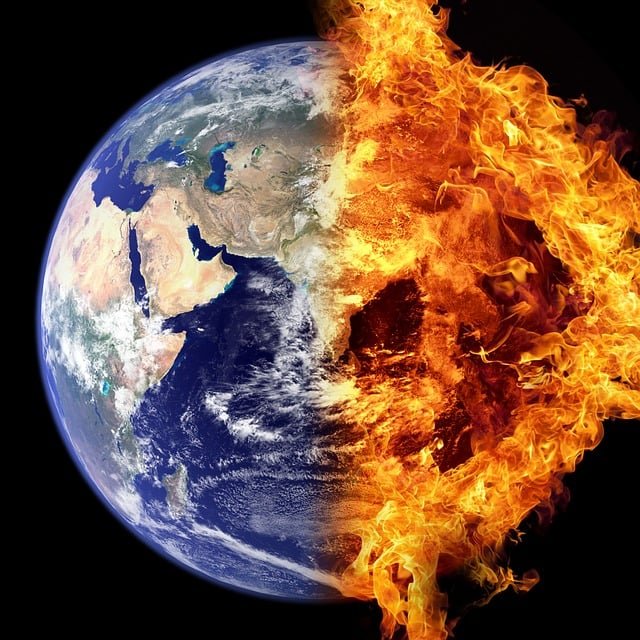It is an indisputable fact that we are at a turning point in our relationship with the environment, as evidenced by the complex web of fragile ecosystems that make up our world. Our actions have an impact on every part of the planet, from the highest peaks to the lowest ocean depths, influencing its future. As responsible managers of this beautiful planet, it’s crucial to understand and address the top 10 global environmental issues we face today.
Table of Contents
1. Climate Change:
The main topic of discussion when it comes to the environment is climate change, which is mostly caused by human activity such as the burning of fossil fuels, deforestation, and industrial operations. The consequences are severe, including sea level rise, melting glaciers, unpredictable weather patterns, and rising temperatures. To mitigate the effects of climate change, governments and individuals must work together to develop policies that prioritize the use of renewable energy sources, reduce carbon emissions, and manage land sustainably.
2. Biodiversity Loss:
Invasive species, pollution, habitat degradation, and overexploitation are causing the beautiful fabric of life on Earth to deteriorate at an alarming rate. The loss of biodiversity puts at risk not only the survival of numerous species but also the resilience and stability of ecosystems. The creation of protected areas, conservation initiatives, and sustainable resource management are essential for maintaining biodiversity and the complex web of life.
3. Deforestation:

Forests, the lungs of our planet, are vanishing at an alarming rate, primarily driven by agricultural expansion, logging, and infrastructure development. Deforestation not only diminishes vital carbon sinks but also contributes to habitat loss, soil erosion, and climate change. Reversing this trend necessitates concerted efforts to promote sustainable forestry practices, reforestation initiatives, and land-use planning that balances economic development with environmental conservation.
4. Water Scarcity:
Despite covering approximately 71% of the Earth’s surface, freshwater – a finite resource – is becoming increasingly scarce due to pollution, over-extraction, and climate change-induced droughts. Water scarcity poses significant challenges to agriculture, industry, and human well-being, exacerbating socio-economic disparities and triggering conflicts over water resources. To address this crisis, water conservation, efficient management strategies, and investment in water infrastructure are imperative.
5. Ocean Acidification:
The oceans are an essential part of Earth’s life support system. Ocean acidification, a consequence of increased carbon dioxide absorption by the oceans, poses a severe threat to marine ecosystems worldwide. As CO2 levels rise, seawater becomes more acidic, endangering marine life such as coral reefs, shellfish, and plankton. This acidification disrupts calcium carbonate formation, which is essential for shell-building organisms, leading to weakened shells and reduced survival rates. Addressing ocean acidification requires reducing carbon emissions, protecting marine habitats, and promoting sustainable fishing practices.
6. Plastic Pollution:
Plastic pollution has exploded out of control. Single-use plastics, in particular, pose a huge threat to wildlife, marine ecosystems, and human health, persisting in the environment for centuries and break down into tiny particles called microplastics that infiltrate food chains. A comprehensive approach is needed to combat plastic pollution, including efforts to reduce plastic waste, recycling initiatives, ban on single-use plastics, and the adoption of earth-friendly packaging.
7. Air Pollution:

The air we breathe is contaminated with a mixture of pollutants, including nitrogen oxide, sulfur dioxide, and volatile organic compounds, emitted from transportation, industrial activities, and agricultural practices. These pollutants not only degrade air quality but also contribute to climate change and pose severe health risks to humans, animals, and ecosystems. From respiratory illnesses to acid rain and ozone depletion, the impacts of air pollution are far-reaching and demand immediate action. To combat air pollution, strict emission standards, a shift to cleaner energy sources, public transportation, and green infrastructure are essential.
8. Water Pollution:
Water pollution stands as one of the most pressing global environmental issues, posing significant threats to human health, ecosystems, and biodiversity. The contamination of freshwater sources by pollutants such as industrial chemicals, agricultural runoff, sewage, and plastics compromises water quality and availability, affecting billions of people worldwide. Polluted water sources endanger human health, leading to waterborne diseases, including cholera, dysentery, and typhoid fever.
9. Soil Degradation:

Soil degradation is a critical global environmental issue threatening food security, biodiversity, and ecosystem stability. Human activities such as deforestation, intensive agriculture, overgrazing, and urbanization are major contributors to soil degradation. These practices lead to soil erosion, depletion of nutrients, salinization, and contamination with pollutants like pesticides and heavy metals. As a result, fertile soil is lost at an alarming rate, diminishing the land’s capacity to support plant growth and sustain ecosystems. Soil degradation also contributes to climate change by releasing carbon stored in soil organic matter into the atmosphere. Addressing soil degradation requires sustainable land management practices, reforestation, erosion control measures, and the promotion of agro ecological farming methods.
10. Food Waste:
Food waste is a global environmental issue with far-reaching consequences. Every year, an estimated 1.3 billion metric tons of food, roughly one-third of the total produced for human consumption, is lost or wasted. Food waste is a major contributor to climate change, with a carbon footprint of about 3.3 billion tons of CO2. Rotting food in landfills emits methane, a powerful greenhouse gas that contributes to climate change. Moreover, the resources used to produce the wasted food, such as water, energy, and land, are wasted, exacerbating environmental degradation. Efforts to reduce food waste can include improved harvesting practices, better storage and transportation methods, consumer education campaigns, and the development of innovative technologies for food preservation and utilization.
Conclusion:
Let us listen to the urgent call of the Earth, recognizing that our collective future is linked with the natural environment. Together, let us embark on a journey of transformation, guided by the principles of sustainability, equity, and respect for all living things.
In the end, our success will not be measured solely by economic prosperity or technological advancement but by our ability to live in harmony with the Earth, honoring the intricate web of life that sustains us all. The time to act is now, for the Earth does not belong to us; we belong to the Earth.


